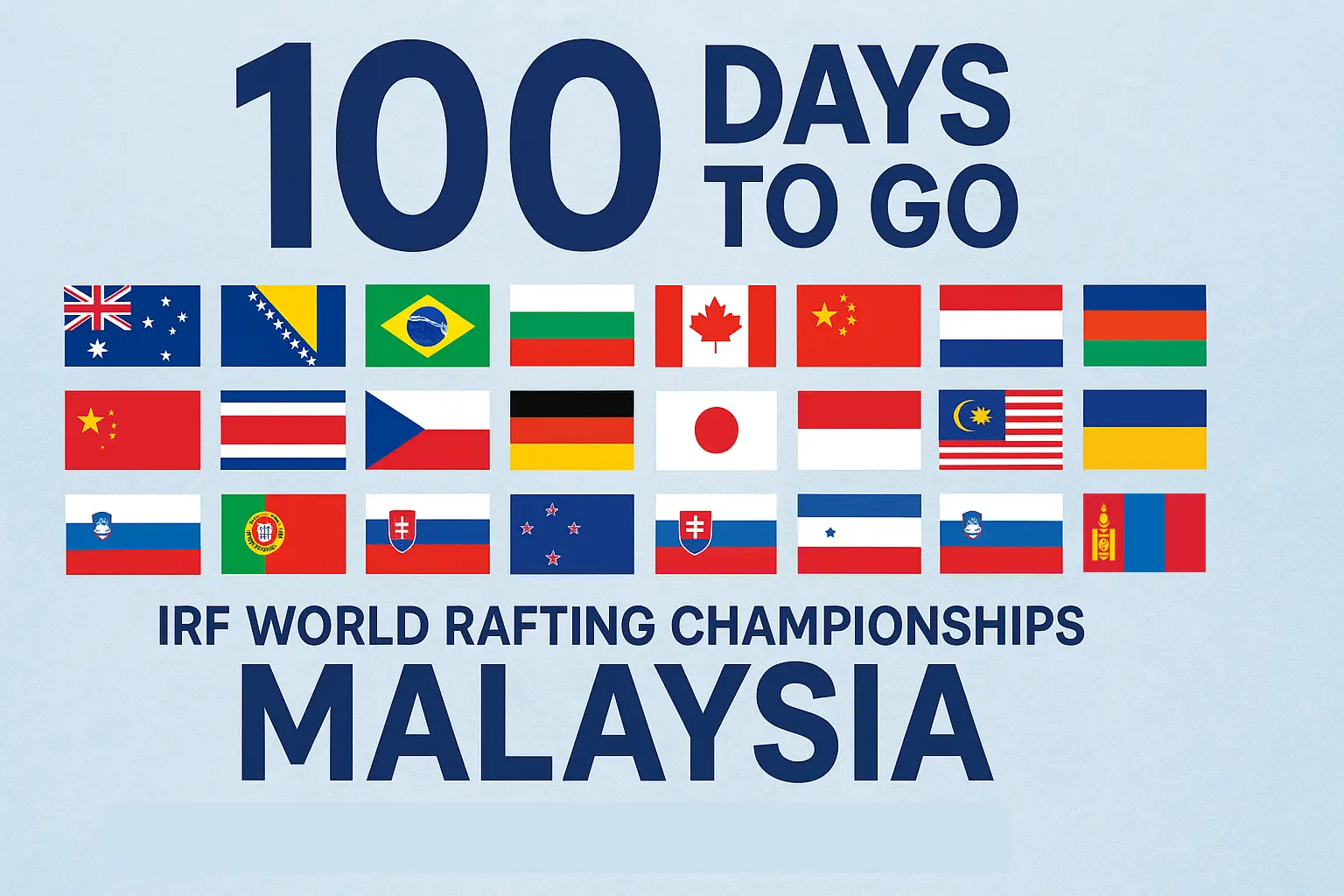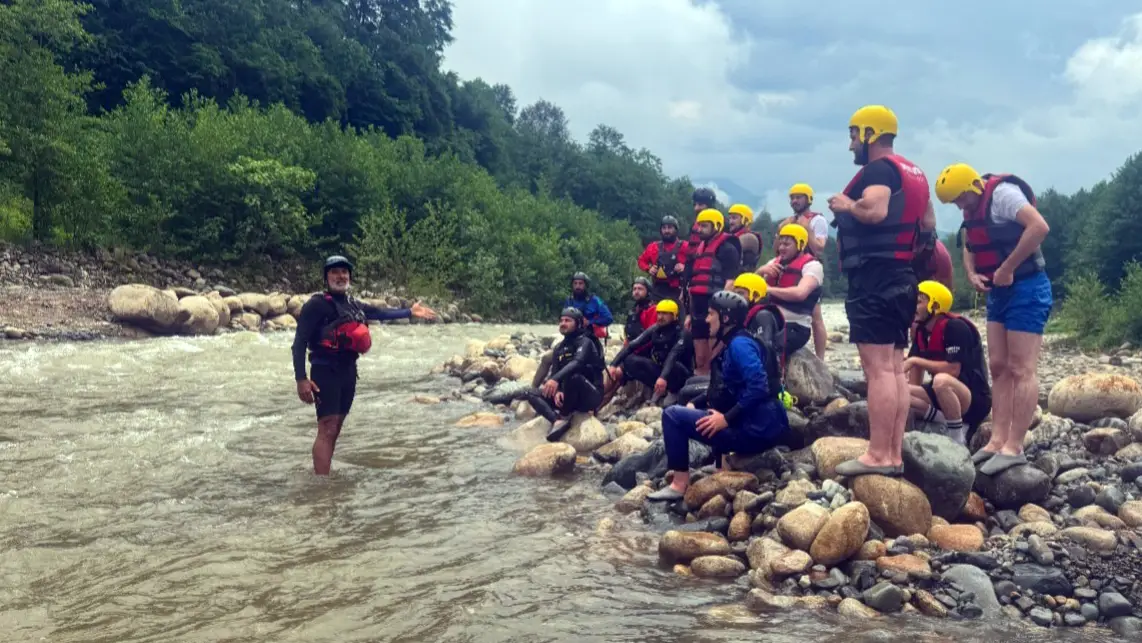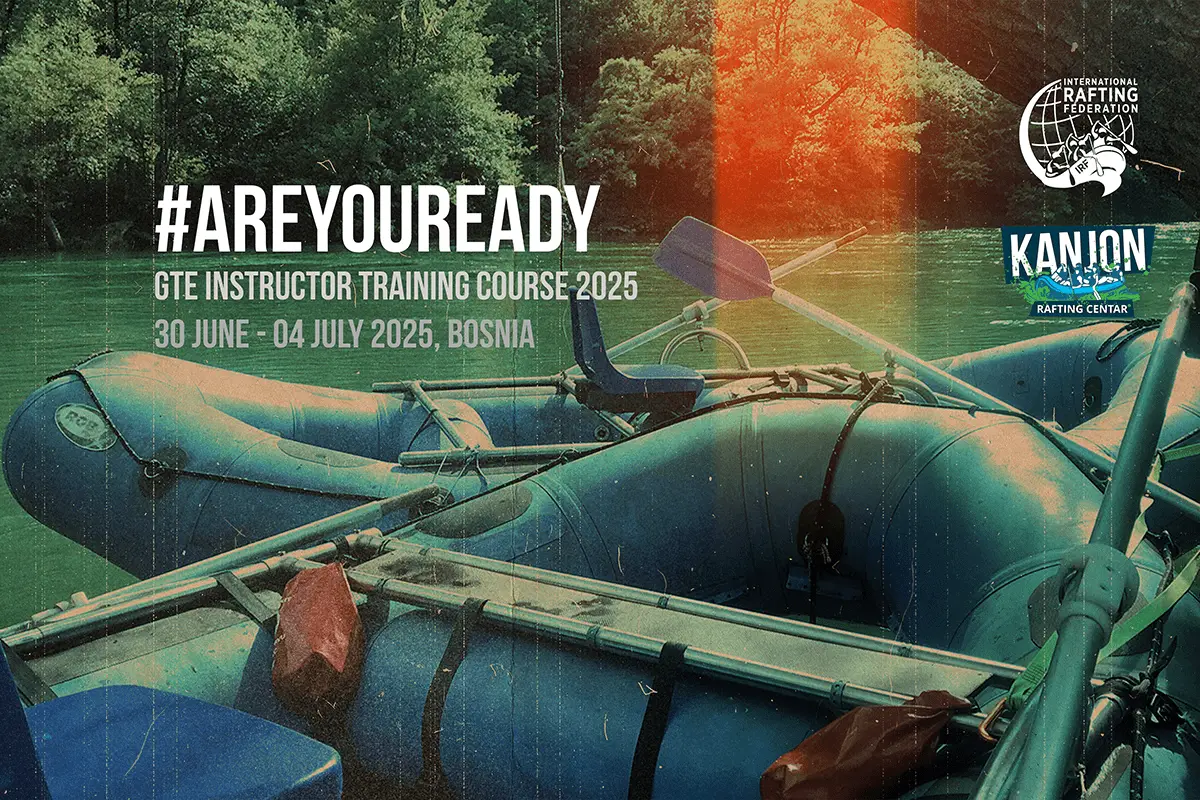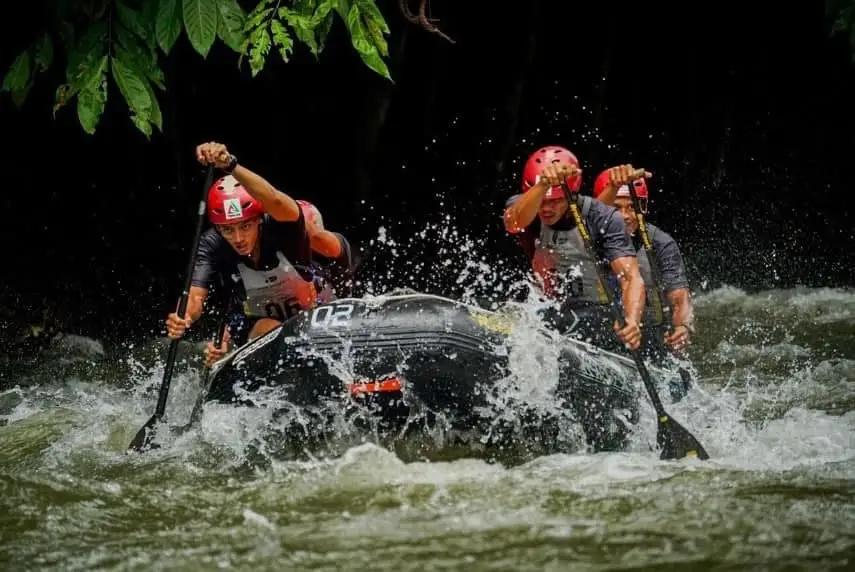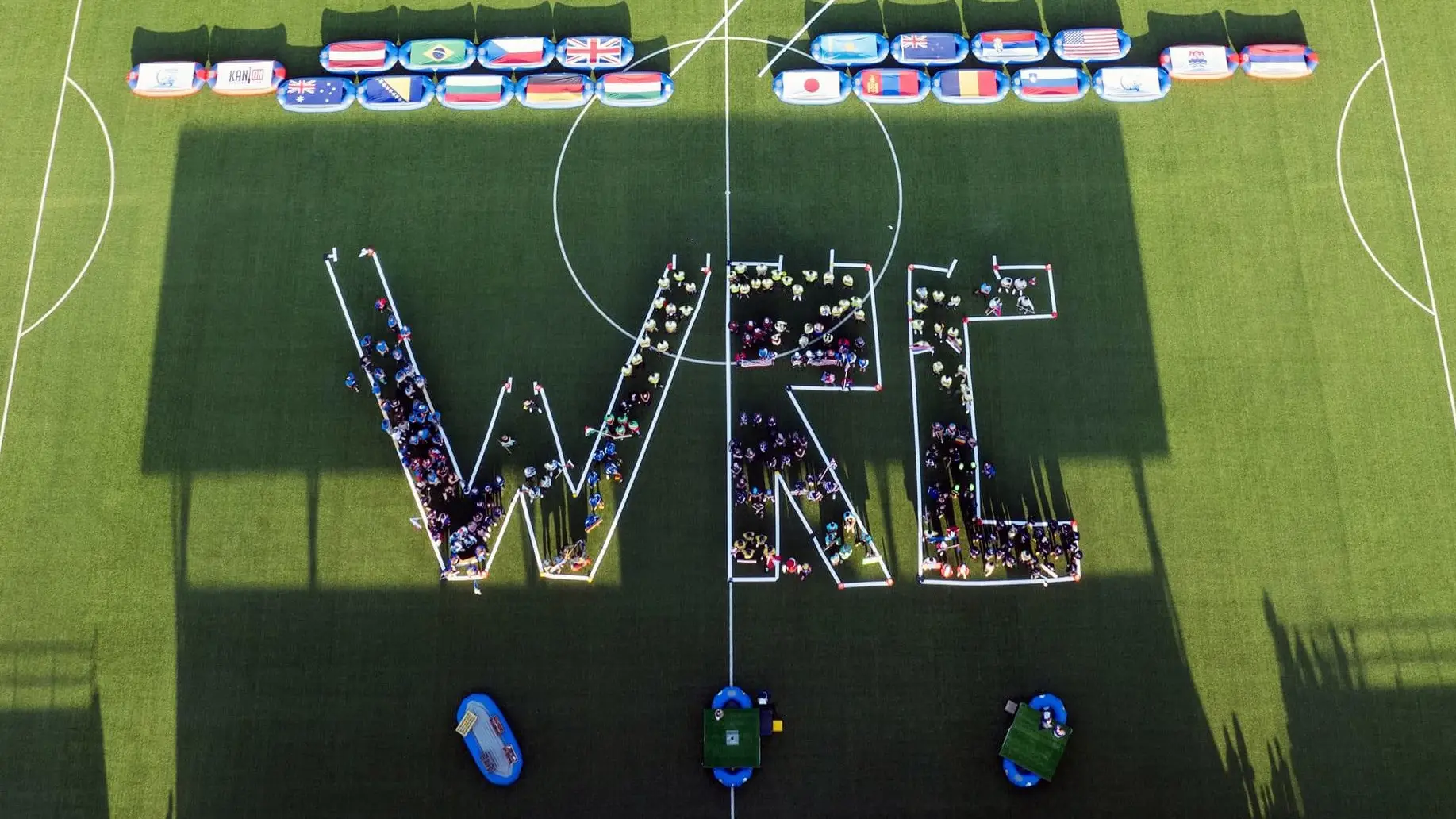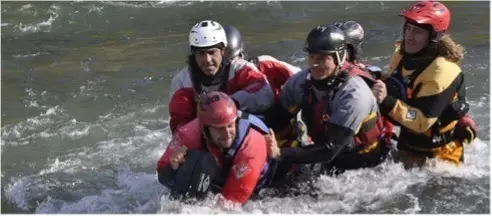Eastern Europe, particularly Serbia and Bosnia, were recently hit by the worst floods seen since they started recording rainfall 120 years ago.
 Floods we encounter frequently, they are nothing new, but when faced with flooding on an unprecedented scale, then what? Do you ever wonder if your teams, clubs, associations, individuals are ready for what happened to Bosnia and Serbia, and which later spilled over to Croatia?
Floods we encounter frequently, they are nothing new, but when faced with flooding on an unprecedented scale, then what? Do you ever wonder if your teams, clubs, associations, individuals are ready for what happened to Bosnia and Serbia, and which later spilled over to Croatia?
Ask yourselves the following –
- How do you as a group associate with the rescue services in your country, town or village?
- Do you know in what ways rafters can help?
- Does your country know that it can count on you all in this situation?
- Does the state know how many rafts, other equipment and manpower you can put at their disposal at a time of crisis?
- What is the plan of action in your rafting association in these situations?
- How do you deal with the Red Cross?
- And so on and so on.

So that you don’t learn from your own mistakes, as we did here in Serbia, here are some details of experiences and advice from those who were on the ground and rescuing people. Hopefully these impressions from teams in the field can help you to change something, to learn and above all to know how to run things at the national and local levels.
Rafting Tara Highlander – rescuing in Bijeljina, BiH.
- In short, there was a total collapse of the state systems.
- The impression was that a large number of people working as rescuers delighted in self-promotion.
- If anyone suffered the most it was the peasants and rural people. I felt sorriest for the farmers and their farms and livestock.
- The way the army works is just a bit off. Police and civil defense – zero points.
- Neoprene is not ideal for this sort of thing definitely – because of infection. To be sure we washed them in Apsesol (disinfectant).
- The problem was the narrow streets, because the water flowed rapidly in them.
- Mobile phones do not work in these situations because the service providers are overloaded. We used radios.
- Barbed wire around the houses and a variety of other obstacles were big problems.
- When haystacks are close to the house they spread out on the water and it is impossible to paddle, swim or walk through it making it impossible to get close to those houses.
- We kept drinking water in our wet suit and not in the raft so as to not have any contact with the water from the environment.
- Arable land became a quagmire – it’s all plowed and fields in the villages literally turned to porridge. Scarily you could drown in the mud …you must not get out of the boat.”
Rafting team “VIR” from Pancevo – rescuing in Obrenovac, Serbia.
-

Raft Team VIR in action In some areas water was creating such a huge pressure on houses which made it impossible to reach through backyards so we had to go in through roofs. The scene was like in horror movies. We took people off beds or the top of closets.
- Some people could be saved only by using paddle boats.
- We took out the urgent people – pregnant women and tiny babies – one lady went into labour!
- Raft boats are good for supplying people with food and water where motorized boats are not able to go.
- On several cases we had to save rescuers who weren’t trained enough for the strong currents of the river because their boats turned over with people and it was pure luck that we there to pull them out to safety.
SKR Zenica Bosna – rescuing in Zenica and elsewhere, BiH.
-

SRK Bosna carrying babies to safety Coordination within the government staff who were handling the crisis ran appallingly which resulted in poor utilization of the human resources available. The slow reaction of these departments in charge in these types of situations resulted in most clubs not coming in time.
- Capable teams were scarce as was the right equipment while cantonal and federal “rescue services” were full of unopened, new equipment but unfortunately they lacked qualified personnel to operate the same equipment.
- There was a problem of constant disinformation…
- The terrain on which we were conducting evacuations was very ambiguous, because the water was hiding barbed wire or other objects that were dangerous to humans and rafting equipment.
- Each club or service must have a very experienced leader/ coordinator who can make snap decisions and plans on the move and a contingency plan if it goes wrong.
- Do not indulge in this kind of rescue and evacuation without good experience and the necessary safety equipment, because these situations are very risky, with very serious consequences.
- People who are waiting for help are frightened, largely irrational and wayward, and therefore the behavior of these people greatly complicates the whole rescue operation.
Rafting club M.R.I. Lajkovac, Serbia – rescuing in their own town.
-

MRI moving people to dry land The city government and the states were totally unprepared for all this. They were without resources and equipment to rescue. And so a number of rafting clubs from Serbia had to come and help, on their own initiative, to save people.
- We had a lot of problems with people who refused to leave their homes. Sometimes we had to take their children out of their hands and to evacuate them to dry land in the refuge centres, but we found that the people, when they saw us with our equipment, we instilled more confidence than the fire-fighters and police.
- These floods carry a lot of waste, broken cables and fences that spoil the motor boats. Power boats are not as functional as rafts, especially in rural areas.
- For night rescue you need lamps that can be fixed on the helmet. Police spotlights, radios and all that have to be water-resistant.
- Fire-fighters are not such good paddlers.
Ronilacki klub “Delfin” Banja Luka
 We were rescuing in Banja Luka, the Lazaarevo, in the streets Lipovačka and Ilije Garašanina. The horrors of what we saw do not show up on the video footage. Total darkness, weather woes and human voices in the darkness who are desperately calling for help. Crying children and adults, who cannot control themselves due to pure fear – it makes you want to scream in anguish.
We were rescuing in Banja Luka, the Lazaarevo, in the streets Lipovačka and Ilije Garašanina. The horrors of what we saw do not show up on the video footage. Total darkness, weather woes and human voices in the darkness who are desperately calling for help. Crying children and adults, who cannot control themselves due to pure fear – it makes you want to scream in anguish.- We used to paddle up to a kilometre along the way, and then pick up people. But some people would not leave objects or places that are almost entirely flooded. At some point we just had to be aggressive, because we could not allow stupidity to endanger human life.
- During this time I enjoyed patés and great meat products and yet it was the people who had little that were the first to provide to those that had nothing and to the rescuers. Often those who were dry, safe and not rescuing gave little, not even asking if we were thirsty.
Nauticki klub “Liman” from Zemun
-

Raft Club Liman to the rescue We responded to Obrenovac. There we found great disaster and disorganization.
- During the rescue we could only hear screams and cries of children from all sides. It was sad to hear all this ….
- It was a big failure because the responsible authorities were not competent and could not organize the large number of people.
- Many poultry lives were lost and after the regular rescue, the last day we rescued the captured and hungry animals!
- The message we give is that they must establish a rescue service of rafters because we know what’s behind each obstacle and how water behaves. Our little knowledge meant huge amount in this situation.
Rafting Klub “Drinska regata”- rescuing in Ljubovija, Serbia.
- The people in Liubovija had great trust in us as we had the right equipment and we ensured they had lifejackets and so they felt safe with us, especially those that knew us personally.
- Noticeable errors that were made was the chaotic method of calling for people with boats, from anywhere, what a mistake. They needed to be able to call the clubs, and then through the municipal headquarters send teams with manpower and boats. But these are things caused by the system collapsing and now is the right time for rafting clubs to get organized in the right way as we suggested two years ago.
First impressions from initial work with the Red Cross refugee bases.
What is needed:
-

Kids bringing supplies to the Red Cross Food is the most important: water, baby food and canned goods.
- Disinfectants, toiletry goods like cloths, soaps, toothbrushes, toothpaste, razor blades for shaving and shaving cream, diapers.
- Do not bring DIRTY, torn clothes and which are missing: buttons, elastic, zips.
- CLEAN towels, pajamas, sheets, blankets. CLEAN underwear for ages from babies (diapers) till the oldest person (socks, underclothes.)
- Footwear.
- Toys for Children
- Batteries for radio, flashlights…
- After the initial urgency and crisis is over there is a need for everything.
You don’t need to ask what these people need – they lost everything! The need everything! As you sit in your house reading this, turn around and look at all you have in your house – they need all those things. The reconstruction process will take months, so do not stop helping. Keep contributing as much as you can.
We may not be able to change the response of our state in these situations. What we can do is to better organize our federations and we Europeans to work more closely together. The floods happen very quickly, but they last for a few very critical days, and then for a long time afterwards until the water withdraws. Every federation should have a plan to get their rafters into action in these situations. To make plans, count rafts and people, set up procedures we do not need the money. Just good will. Do we have it?
Neighbouring countries can assist each other with equipment and manpower. We need a European Rafting Association for action in these emergency situations so that it is clear how many of the countries have rafts and rafters ready for quick action. The Euro Race Committee meeting that is to be held at R4 Euro Champs in Slovakia is an ideal place for this to be on the agenda.
Frankly, I don’t think any flooding anywhere so far has seen such a large number of rafting teams involved in the rescue. This is the result of the growth of rafting and clubs in the world.
It has not been possible to mention all the rafters who were out there rescuing but we do thank you for your sacrifice during these floods. Please send us your feedback –
- Were you involved in rescuing? What did you learn that would help for the future?
- Does your country use rafters in emergencies like this?
- Do you plan to talk to your government about being on standby in the future?
Article by Nada

